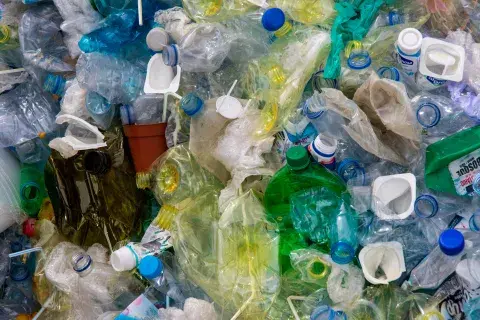
NRRA Executive Director Reagan Bissonnette was recently invited to speak at the Solid Waste Advisory Committee meeting hosted by the Connecticut Department of Energy & Environmental Protection. She shared market insights from NRRA's experience as the oldest and largest recycling cooperative in the United States, including why recycling markets are currently down. In addition, she shared information about plastics recycling in light of recent negative news stories from NPR (Recycling plastic is practically impossible – and the problem is getting worse) and other news outlets based on a new Greenpeace report. While plastics recycling is far from perfect, some of the report's findings are misleading and have been misconstrued by the media, leading to mistrust by the public about recycling. Here are three issues with the report.
Issue #1: The report says overall, the U.S. has a 5% plastic recycling rate.
- The Reality: This does NOT mean that only 5% of plastics put in residential recycling bins are being recycled! The report includes ALL plastics generated by consumers, including many plastic single use items that are not recyclable in community recycling programs (ex. straws, trays, bags/film, plates, fast food wrappers, coffee pods, etc.). The report also included plastics like those in durable goods, such as car dashboards and the plastic around your computer monitors.
Issue #2: The report says #1 PET and #2 HDPE plastics have U.S. reprocessing rates of about 20% and 10%, respectively, and all other plastics have negligible reprocessing rates in the U.S.
- The Reality: By looking only at U.S. companies that recycle plastics, the report doesn’t include companies in Canada that recycle plastic. NRRA works with several companies in Canada, including plastics recyclers, and reporting on plastics recycling for North America would provide a more complete picture.
Issue #3: The report states that #3-7 plastic bales, which materials recovery facilities (MRF) often generate, have negligible demand, with some being thrown away rather than recycled.
- The Reality: NRRA spoke with its plastics vendors who accept #1-7 bales and #3-7 bales. The facilities accepting #3-7 bales are typically recovering #2 (MRFs miss some #2s), #4, #5 and some #7. The residue is used for fuel replacement or disposed. Note that most plastic containers in the residential recycling stream are comprised of #1, #2 & #5 plastics; far less items accepted in residential recycling programs are #3, #4, #6 or #7.
Want to delve deeper into the data from the Greenpeace report? Check out Editor's Take: The Problem with the Greenpeace data from Resource Recycling.
